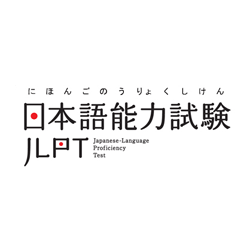


N3 bridges the gap between N4/N5 and N1/N2. N1 and N2 measure understanding of Japanese used in a broad range of actual everyday scenes. N4 and N5 measure understanding of basic Japanese that is mainly learned in the classroom. Therefore, the JLPT measures comprehensive Japanese-language communicative competence through three elements: "Language Knowledge," "Reading," and "Listening." The JLPT is offered in five levels (N1, N2, N3, N4, and N5, in order from most difficult to least difficult). In order to perform various "everyday tasks" that require language, not only language knowledge but also the ability to actually use it are necessary. The JLPT places importance not only on knowledge of Japanese-language vocabulary and grammar but also on the ability to use the knowledge in actual communication. Please click on the red button above to be taken to a link to registration. The next opportunity to take the JLPT in the United States will be on SUNDAY, DECEMBER 1, 2019. The test is administered just once a year in the US, on the first Sunday of December. The test is administered at 18 test sites located around the country. In the United States, almost 7,000 people registered for the JLPT in 2018. By 2011, there were more than 600,000 examinees in more than 60 countries. In the beginning, there were approximately 7,000 examinees worldwide. The Japanese-Language Proficiency Test (JLPT) was developed in Japan, and has been offered since 1984 in countries all around the world as a means of evaluating the proficiency of non-native learners of Japanese. In the below list, verbs are listed in Dictionary form and masu forms, the reason is that once you know the dictionary form or masu form correctly, it will become easier for you to search online about the usage of that verb or to know other forms of that verb.Test Registration open until September 30Įach year, the Center for Asian Studies manages the administration of the JLPT on the CU Boulder campus. Let's see more verbs how they change from dictionary form to polite form: おきる = to get up and おく = to put, to keep but when written in hiragana, form of おきる is おきます and masu form of おく is also おきます.

Note: Need to pay proper attention how the forms changed when you need to make it a form of verb. Here, the dictionary form (plain form) and Masu form (polite form) of the verbs are listed with English meaning, hope this will work as your reference material. Verbs necessary to pass JLPT N5 The following is a list of 109 verbs which you need to know in order to make yourself confident to pass the JLPT level N5.


 0 kommentar(er)
0 kommentar(er)
